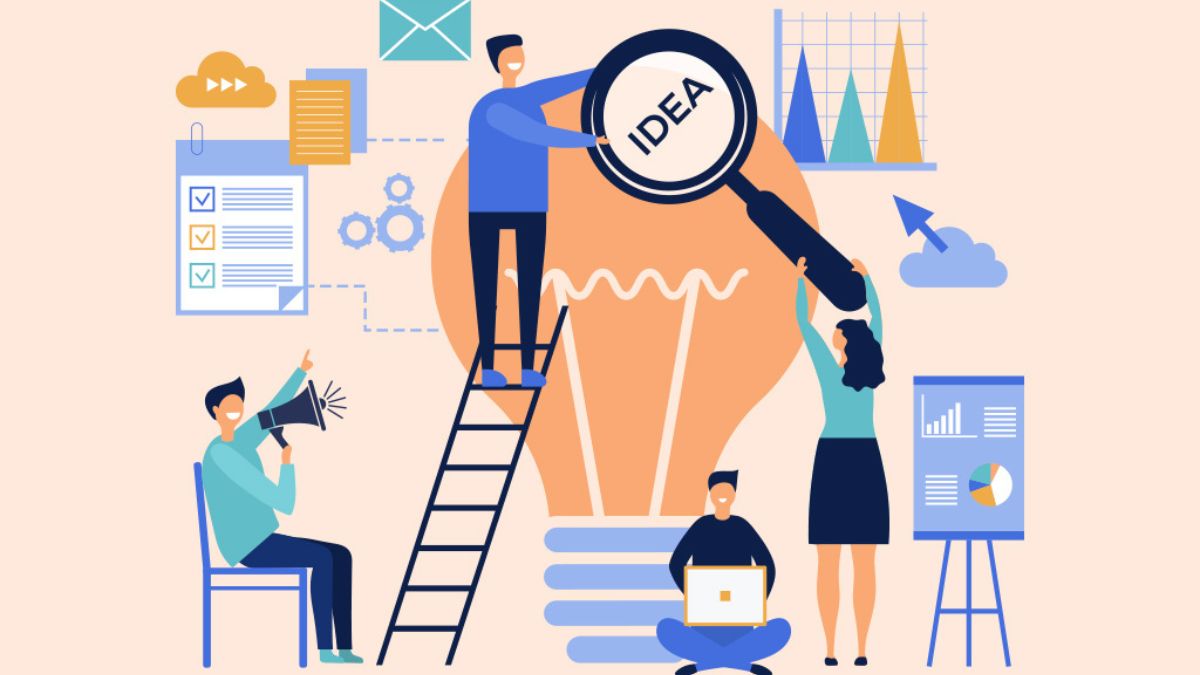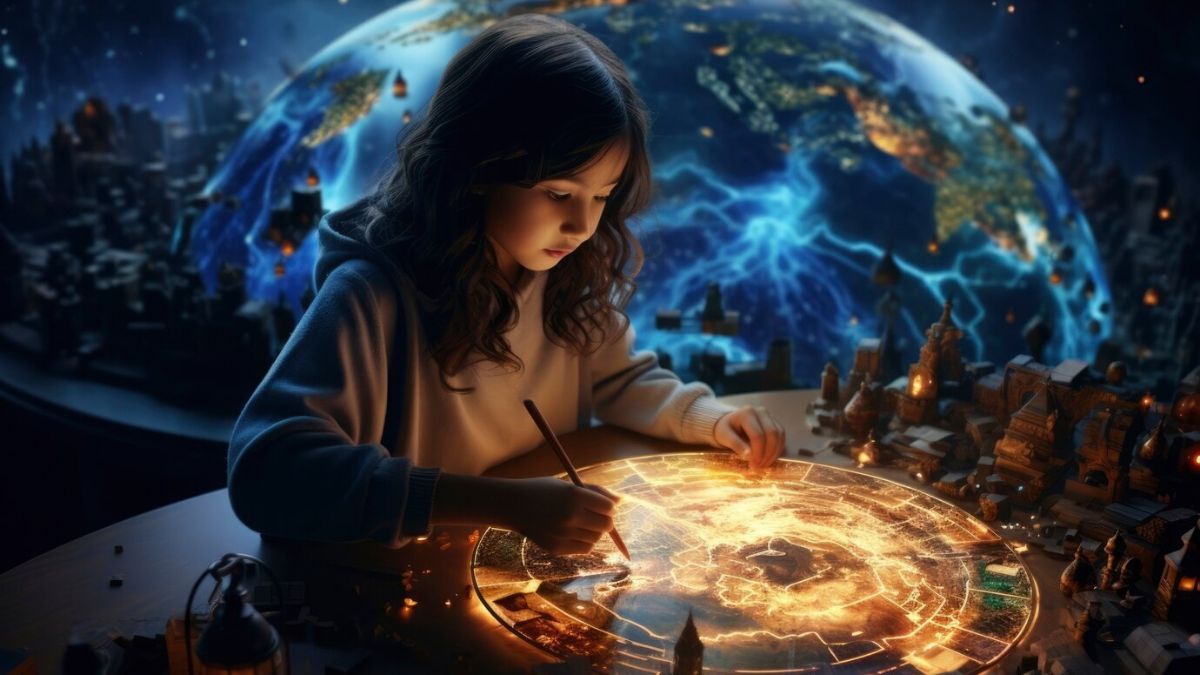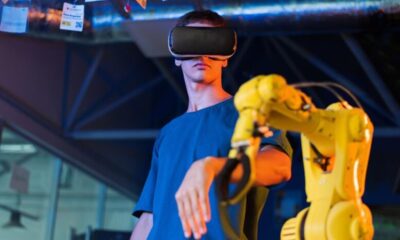HOME
5 Winning Strategies for Dominating Virtual Reality Games

Jumping into competitive VR games opens up a whole new world of challenges unlike traditional gaming. In virtual reality, your actual physical movements control what happens in the game, which means skills like aim, reaction time, and even physical fitness can determine whether you win or lose. Many people dive into VR competitions expecting their experience with flat-screen games to carry over, only to find themselves outmatched by players who understand the unique advantages that VR movement provides. Whether you’re getting frustrated with constant losses in Population: One, can’t seem to climb the leaderboards in Pistol Whip, or want to improve your Beat Saber scores, there are specific techniques that can dramatically improve your performance. The good news is that most VR champions aren’t born with special abilities—they’ve just mastered certain approaches that anyone can learn with practice. Let’s explore five key strategies that can help you start winning VR experience in Austin from Zero Latency VR more of your virtual reality competitions.
Use Your Whole Body, Not Just Your Arms
One of the biggest mistakes I see new VR players make is standing stiffly in one spot, only moving their arms to aim or swing. Meanwhile, the top players are ducking, weaving, and using their entire bodies to gain advantages. In shooting games like Contractors or Pavlov, crouching behind virtual cover actually works because your physical body is crouching! When I first started playing Superhot VR, I kept getting hit until I realized I could literally dodge bullets by leaning my body to the side. My friend Tom went from average to tournament-level in Eleven Table Tennis when he started using proper footwork instead of just standing flat-footed. Make your play space as big as safely possible, and don’t be afraid to get physically active. Some of the best VR players I know look like they’re practicing some wild dance when they play—stepping sideways to avoid virtual danger, dropping into quick crouches, and even jumping when the situation calls for it. Just be aware of your surroundings and clear any breakable items from your play area first!
Master VR-Specific Movement Techniques
Movement in VR games often works differently than in traditional video games, and learning these unique mechanics can give you a serious edge. Take “combat climbing” in Echo VR for example—the pros use a specific wrist-flicking technique to launch themselves off surfaces that gives them much more speed than regular pushes. Or consider the “Z-pattern reload” that top Onward players use to reload their virtual rifles in half the time it takes beginners. In Until You Fall, I struggled until I learned the proper timing for parrying with my wrists rather than my full arms, which conserved energy and improved my reaction speed. Each game has its own movement quirks and techniques that the best players have figured out. Watch tutorial videos from top players on YouTube, where they often break down these specialized movements in slow motion. Join Discord servers for your favorite competitive games and ask about advanced movement tips—most VR communities are friendly and eager to share knowledge. When you practice, focus on perfecting one specific technique at a time rather than trying to improve everything at once.
Optimize Your Physical Setup for Competitive Advantage
Your real-world setup dramatically affects your in-game performance. I remember playing against someone in Racket: Nx who seemed impossibly fast until I learned they were using a special VR gunstock controller for perfect stability. For serious shooting games, accessories like magnetic controller cups or full gunstock setups can vastly improve your aim. For physically demanding games like Thrill of the Fight or Pistol Whip, moisture-wicking headset covers prevent sweat from becoming a distraction. Something as simple as wearing the right shoes makes a difference—many top players use wrestling shoes or dance shoes that allow quick pivoting without catching on carpet. Cable management is crucial for PCVR users; a proper pulley system can eliminate the distraction of cords tugging at critical moments. Even your room lighting matters—consistent, moderate lighting helps your headset’s tracking work more reliably, preventing those frustrating moments when your hand seems to “disappear” mid-game. If you play standing for long periods, consider an anti-fatigue mat to reduce lower body strain and maintain your energy throughout extended sessions.
Train Your VR-Specific Reflexes and Muscle Memory
VR champions understand that success requires developing entirely new reflexes that don’t necessarily transfer from traditional gaming or even real-world sports. When I first started playing competitive Beat Saber, I couldn’t understand how the top players achieved such high scores until I realized they were using specific wrist movements that maximized points while minimizing effort. This takes deliberate practice. Set aside “training time” separate from regular play where you focus purely on developing specific skills. For example, spend 15 minutes just practicing quick-turns in Contractors, or work exclusively on your backhand in Racket Fury. Use training modes or custom scenarios when available—apps like Aim XR or Hot Squat are perfect for building VR-specific skills that transfer to many games. Record your practice sessions and watch them back to spot inefficiencies in your movement. Pay attention to your breathing too—many players inadvertently hold their breath during intense moments, which hurts performance. The pros know to maintain steady breathing even during frantic gameplay. Remember that VR uses different muscle groups than traditional gaming, so expect some adaptation time as your body develops new patterns of movement.
Study Your Opponents and Adapt Your Strategy Mid-Game
The human element makes VR competition especially dynamic. Unlike AI opponents, real players have habits and patterns you can exploit if you pay attention. During a recent Population: One tournament, I noticed my opponents always took the high ground on the right side of the map—so I started flanking left and caught them by surprise. Watch how opponents hold their weapons, which direction they tend to dodge, and what strategies they rely on when pressured. In social VR spaces, you can literally see your opponent’s body language, which provides clues about their next move. Are they leaning forward, getting ready to rush? Are they glancing to the side, looking for an escape route? These physical tells don’t exist in traditional gaming. Be ready to switch tactics mid-game based on what’s working against specific opponents. If someone is extremely good at blocking high attacks in Blade & Sorcery, switch to low strikes. If someone keeps sniping you in the same game, close the distance quickly where their long-range advantage disappears. The most successful VR competitors aren’t those with the fastest reflexes, but those who can quickly identify and counter their opponents’ preferred strategies.
HOME
How PlayHub Can Enhance Your Gold Wealth in World of Warcraft

World of Warcraft isn’t just about spending coin—it’s your ticket to convenience, clout, and a touch of respect among your peers. You might be grabbing potions for those brutal Mythic+ runs one minute, eyeing raid gear on the Auction House the next, or even setting aside enough for that rare mount. Loads of players pour endless hours into farming, crafting, or trading just to bulk up their coffers, but then you have others who get clever and mix up strategies for boosting their stash. And then there’s https://playhub.com/—a hub where gamers swap in-game services and team up with savvy folks who know a thing or two about professions, farming, and the ins and outs of the game’s economy. Generally speaking, gold here isn’t only about pacing your game—it carves out your freedom in Azeroth, too.
Understanding Gold’s Role in Modern WoW
Gold now plays an even bigger role in WoW than it used to. With all the twists in Shadowlands and Dragonflight, prices for crafted gear, raid consumables, and even time-saving services have shot up. Blizzard is moving the game more toward a player-run economy, and if you happen to know the market tricks—or have a friend who does—you’re more likely to come out ahead.
Daily quests or random dungeon runs might still put a few coins in your pocket, but if you’re aiming for serious gold, you often need advanced moves like Auction House flipping, fine-tuning your professions, or hunting down rare materials. PlayHub kind of works as a connector between players who want to level up and those who’ve already cracked the market code.
Mastering Profession-Based Goldmaking
Professions in WoW have had something of a comeback in recent expansions. You might be a Blacksmith forging epic weapons, an Alchemist mixing top-tier flasks, or an Enchanter seasoning raider gear with those sought-after enchants—the bottom line is, your chosen trade can become a dependable gold stream.
Mind you, ascending the ranks of any specialty isn’t easy, especially on competitive servers; it usually requires smart investments, keeping track of cooldowns, and knowing when the market’s just right. On PlayHub, for instance, you might find someone who can show a new Leatherworker the cheapest path to maxing out skills while also pointing out which intermediate crafts can make you some extra coin.
Sometimes, you even get advice on which items are trending up in your server’s economy and how to use Crafting Orders and reagents effectively. Working side-by-side with someone who really gets the crafting interface—and how to juggle material costs—saves you from a long, expensive period of trial and error, helping you hold onto more gold in the long run.
Auction House Flipping and Market Strategy
Flipping items on the Auction House remains one of the most tried-and-true ways to grab gold in WoW, but it isn’t as simple as it sounds. It calls for a solid grasp of your server’s economy, an understanding of the patterns of supply and demand, and—yes—timing your moves perfectly.
While some folks are happy to spend hours digging into market research, others prefer to work with traders who’ve already busted the code. On PlayHub, many sellers offer coaching for the Auction House or share direct market insights. For example, you could be taught how to spot items being sold for less than their worth, scoop them up in bulk, and then list them right at the market’s peak. There are also sessions focusing on niche markets—like Battle Pets, BoE gear, or even transmog items—that can bring in high returns with surprisingly little competition.
With live lessons on tools such as TradeSkillMaster (TSM) or The Undermine Journal, you’re less likely to play the guessing game and more likely to get strategies that match your style—be it fast flips for daily profit or longer-term seasonal trades.
Efficient Farming Strategies for Materials and Rares
In WoW, making gold through material farming remains a time-honored approach—you might be gathering herbs like Writhebloom on a whim, chipping away at mining nodes deep in Zaralek Cavern, or even skinning creatures from the mysterious Emerald Dream. Not every route is built the same, though, and generally speaking, knowing exactly where, when, and which items to target can really shift your gold-per-hour expectations.
Over on PlayHub, you often bump into seasoned farmhands who share not-so-formal, custom routes and even spontaneous “guided farming runs”. Sometimes they’ll let you tag along to see, firsthand, how one soloes elite mobs in a Dragonflight zone for that rare drop or synchronizes several professions to boost loot collection—the advice comes as much from experience as it does from learned patterns.
Then there’s another angle: instance farming. Some sellers lean into running old raids for flashy transmog or hit up hyperspawn areas for raw gold and even vendor trash; methods like these can be lucrative but, in most cases, require a fair bit of know-how—reset mechanics, slick movement, and bag management all play a role. With some patient instruction, what used to be a monotonous grind can flip into a surprisingly smooth gold-making routine.
Gold from Mythic+ and Raid Boosting Services
Not everyone tackles Mythic+ dungeons or raids solely for the gold rush, but many find these challenges can evolve into a steady income stream—especially when community-based services like carrying or assisting come into play. It’s not unusual for players to rake in tens of thousands of gold weekly by helping out with keystone upgrades, clearing raid bosses, or even bagging Glory achievements.
Through PlayHub, connecting with experienced M+ or raid runners is almost second nature; they offer insights on setting up carry groups plus give pointers on proper preparation for reliable, safe boosting. In short, these aren’t just about selling carries but about understanding the nitty-gritty of organizing group content. So whether you’re a tank learning to lead a decent +20 run or a DPS tinkering with maximized uptime while dodging tricky mechanics, working with veterans might just transform you into someone who not only plays better but earns on the side too.
Making Gold through Gathering Professions
Gathering professions like Mining, Herbalism, and Skinning never really go out of style—especially at the start of an expansion or during sudden patch surges. That said, effective gathering isn’t just about buzzing over the same zones; it’s largely about timing, a touch of server savvy, and pairing your route with current demand cycles.
Often, PlayHub sellers will throw in some extra advice—tailored maps, timers for those elusive rare nodes, even server-specific economic tidbits—to help fine-tune your path. Occasionally, you might join a live walkthrough where they point out not only where to start but also what pitfalls to dodge and when it might pay off to bank or repost your goods.
For casual players who can’t always afford to experiment for hours, these insights can mean that even a 30-minute session might yield several thousand gold, particularly on those bustling raid reset days.
Turning Knowledge into Passive Income
At the end of the day, knowledge is perhaps the most powerful tool in WoW’s gold-making arsenal. It’s all about spotting what sells, acting at just the right moment, and keeping a pulse on new patches and economic shifts. While many might still depend on guesswork or scattered guides, dedicated PlayHub users work closely with folks who are on top of meta shifts, patch cycles, and even those pesky profession buffs that can flip the game overnight.
Some veterans even offer long-term mentorships or deep-dive market analyses tailored to specific servers. A Jewelcrafter, for instance, might get a heads-up on prepping for a patch that introduces new gem recipes, or a tailor may learn how to time releases for crafted PvP gear perfectly. In most cases, by staying one step ahead rather than scrambling to react, players can eventually set up systems for passive income—be it through the Auction House or smart crafting ventures.
Goods that consistently hold their demand can really be a game-changer. Discovering how to automate those everyday tasks—maybe by fiddling with macros or add-ons—cuts down on extra work. Many sellers are happy to lend a hand with this, and generally speaking, the payoff isn’t only extra gold; it also means less burnout and more freedom to dive into the parts of the game you truly enjoy.
Conclusion
In World of Warcraft, having gold opens up a whole range of opportunities, from additional content to genuine convenience and a dash of personalization. Whether you’re trying to snag that top-notch gear, hoarding materials for your guild, or simply aiming to snag your favorite mount without the usual hassle, PlayHub brings together a community of experienced players who share what they’ve learned over time. They cover everything—you name it, from fine-tuning your profession and flipping items at the Auction House to traditional farming and even quick market analysis—so that the process of making gold turns from a tedious grind into a real system.
More than just a shortcut, PlayHub ends up being something like a toolkit—a place where know-how and hands-on experience mix together to help every player build their own version of wealth in Azeroth. By linking up with the right folks and tweaking your strategies, you end up spending less time guessing—and hey, a little unpredictability can be fun—and more time actually meeting your gaming goals on your very own terms.
HOME
Key Medical Evidence That Strengthens a Malpractice Demand Letter

In the world of medical malpractice litigation, demand letters are more than just formal communication—they are strategic blueprints for seeking fair compensation. These letters outline the harm suffered due to medical negligence and signal the seriousness of the claimant’s intent. But what truly sets apart a persuasive legal malpractice demand letter from a weak one? The answer lies in the quality of the medical evidence.
Strong evidence doesn’t just support the case—it often decides it. It lays the foundation for negotiation, increases the chances of settlement, and positions the claimant with confidence even before stepping into a courtroom. Whether you’re an attorney preparing a case or a firm offering demand letter services, understanding the key types of medical evidence can be a game-changer.
1. Medical Records: The Cornerstone of Every Case
Medical records are the first—and often most critical—component of evidence in malpractice claims. These documents include physician notes, diagnostic test results, surgical reports, discharge summaries, and nursing charts. They help to:
- Establish timelines
- Identify standard vs. deviated practices
- Document symptoms, diagnoses, and treatments
A detailed and organized review of these records allows legal teams to pinpoint where and how care went wrong. If an infection was left untreated or a surgery note reveals a deviation from the norm, these are moments to spotlight in your legal malpractice demand letter.
Tip: Always ensure records are complete and request missing information, especially for hospital stays, follow-ups, and prescriptions.
2. Chronologies and Timelines: Making the Story Clear
Even the most comprehensive medical records can overwhelm a reader if not properly organized. That’s why medical chronologies and graphical timelines play a critical role in shaping the narrative.
These tools allow you to:
- Present the sequence of medical events in a logical order
- Highlight gaps in care or delayed diagnosis
- Align clinical decisions with patient outcomes
When structured well, a medical chronology demonstrates a clear cause-and-effect relationship—exactly what insurance companies and courts want to see.
3. Expert Medical Opinions: The Voice of Authority
Medical malpractice is a technical field. The average reader—including jurors and sometimes even lawyers—might not fully understand what went wrong without expert interpretation. This is where medical opinions come in.
An expert review service offers:
- Professional validation of negligence
- Clarification of how a provider deviated from the standard of care
- Insights into long-term effects on the patient’s health
Incorporating this into your demand letter services adds undeniable credibility. When a medical professional confirms substandard care, it raises the stakes and strengthens the settlement conversation.
4. Pain and Suffering Charts: Visualising the Human Cost
Malpractice is not just about procedures gone wrong; it’s about people who suffer.
Pain and suffering charts document:
- Daily discomfort and limitations
- Emotional trauma and psychological effects
- Long-term or permanent damage
These are especially powerful in claims where non-economic damages are significant. They help quantify intangible losses, making it easier to justify compensation in your legal malpractice demand letter.
5. Billing Summaries and Financial Records: Proving Economic Damages
One of the clearest forms of evidence in a malpractice claim is money lost. Hospital bills, therapy costs, medication receipts, and future care projections paint a complete financial picture of the damages suffered.
Include:
- Detailed treatment invoices
- Wage loss documentation
- Projected medical expenses supported by expert estimates
This economic breakdown gives substance to your claim. It tells insurers: this isn’t just about pain—it’s about real, measurable losses.
6. Witness Testimonies and Affidavits
Witnesses—including nurses, attending physicians, or even family members—can support your version of events. Their testimonies offer:
- Confirmation of what happened
- Insight into the patient’s physical/emotional state
- Support for causation or negligence claims
Sworn affidavits, when included as addenda, bring authenticity and a first-hand perspective to your case.
7. Photographic Evidence and Imaging Reports
Visual documentation—like surgical photos, wound images, or radiology results—can leave a lasting impact. Experts use imaging reports (MRIs, CT scans, X-rays) to explain the severity and internal implications of malpractice.
This evidence:
- Shows undeniable signs of harm
- Backs up medical assessments
- Humanizes the injury beyond numbers and charts
Such imagery makes the case emotionally and intellectually compelling, especially in demand letter services.
8. Medical Synopsis and Summaries: Refining the Argument
A medical synopsis distills complex data into digestible, relevant facts. This allows the demand letter to be:
- Focused
- Easy to follow
- Legally aligned with precedents
Well-crafted summaries integrate multiple forms of evidence—medical records, opinions, charts—into one coherent story that supports the client’s demands. It’s this synthesis that transforms documents into persuasion.
How Medical Legal Services Can Help
Medical legal services play a crucial role in the preparation and effectiveness of a legal malpractice demand letter. Here’s how these services strengthen your demand letter and overall case:
- Comprehensive Evidence Collection: Medical legal professionals like Trivent Legal meticulously gather, review, and organize all relevant medical records, billing statements, and supporting documents, ensuring nothing is overlooked.
- Expert Analysis and Chronology Creation: They prepare detailed medical chronologies and timelines, making complex medical histories clear and compelling for insurers and courts.
- Access to Expert Witnesses: Medical legal services connect attorneys with qualified medical experts who can review the case, provide authoritative opinions, and clarify the standard of care and causation.
- Drafting and Structuring Demand Letters: Professionals ensure the demand letter is logically structured, factually accurate, and supported by robust evidence, enhancing its persuasiveness and professionalism.
- Pain and Suffering Documentation: They help quantify non-economic damages through pain and suffering charts and narratives, strengthening claims for compensation.
- Settlement Leverage: A well-prepared demand letter, backed by comprehensive evidence and expert input, can prompt early settlement discussions and improve negotiation outcomes, often avoiding lengthy litigation.
Conclusion
Demand letters in medical malpractice cases are not just introductions; they are presentations of truth. They must persuade insurers, intimidate opposition, and advocate for justice.
To do that, they need to be powered by evidence—carefully chosen, professionally interpreted, and clearly presented. From medical record expert opinions to pain charts and billing summaries, each piece plays a role in strengthening your case.
Whether you’re looking to settle or escalate to court, a demand letter backed by credible medical evidence sets the tone for success. And when every detail counts, having the right support can make all the difference.
Let your demand letter speak loudly and clearly, with the right evidence behind every word.
HOME
A Gaming Revolution The Legacy of Final Fantasy:

When talking about iconic role-playing games, few titles match the legacy of the Final Fantasy Game series. Since its inception in 1987, this franchise has continued to define and redefine what RPGs can achieve in storytelling, gameplay mechanics, and emotional depth. Among the many unforgettable characters the series has introduced, Squall Leonhart remains one of the most stylish and recognizable—his brooding personality and unique fashion sense, particularly the Squall jacket, have become legendary in gaming culture.
Storytelling that Transcends Time
One of the most defining features of Final Fantasy games is the way they craft emotionally rich and immersive narratives. Whether it’s the tragic love story in Final Fantasy X or the political intrigue in Final Fantasy XII, each installment brings a fresh yet timeless tale. These stories are often built on universal themes—love, sacrifice, betrayal, and hope—woven into fantastical worlds full of magic, advanced technology, and complex characters. This narrative excellence is why players become so emotionally invested in each release.
Evolution of Gameplay
The gameplay in Final Fantasy has evolved drastically over the decades. The original games used a turn-based combat system, which allowed players to strategically plan their moves. However, newer titles like Final Fantasy XV and Final Fantasy VII Remake have incorporated real-time combat, providing a faster and more immersive experience. Despite these changes, the core of the gameplay remains the same: deep character progression, strategic planning, and an engaging world that rewards exploration.
Memorable Characters and Their Impact
Characters are the soul of the Final Fantasy series. From the stoic Cloud Strife to the optimistic Tidus, each hero brings a distinct flavor to their respective storylines. These characters often deal with real human emotions and dilemmas, making them relatable even in the most fantastical settings. Their growth throughout the games contributes to the overall depth and replay value of the series. Villains like Sephiroth and Kefka are equally memorable, adding tension and complexity to the narrative.
A Soundtrack Like No Other
Music in the Final Fantasy games is not just background noise—it’s an essential storytelling tool. Legendary composer Nobuo Uematsu, among others, has created some of the most hauntingly beautiful pieces in gaming history. From “To Zanarkand” to “One-Winged Angel,” the music amplifies the emotional weight of each scene. Many fans consider the soundtrack reason enough to play the games, and some attend live orchestral performances of the game’s music, showing just how influential it has become.
Graphics and World Design
Visual storytelling is another area where Final Fantasy shines. Each game boasts intricately designed worlds, ranging from the steampunk aesthetic of Final Fantasy VII’s Midgar to the lush, sprawling landscapes of Final Fantasy XV. These settings are more than just backdrops—they are living, breathing environments that contribute to the story. With every generation, Square Enix has pushed the envelope of what’s visually possible, often setting new standards in the gaming industry.

Cultural Influence and Merchandise
Beyond the games themselves, Final Fantasy has had a massive cultural impact. The series has inspired anime, films, and a vast array of merchandise. Items like figurines, posters, and apparel are hugely popular among fans. Cosplayers especially find inspiration in the series’ elaborate character designs, and conventions often feature dedicated Final Fantasy events. The influence of the franchise can also be seen in other media, as many games and stories borrow elements that Final Fantasy popularized.
A Gaming Revolution: The Legacy of Final Fantasy
As Final Fantasy continues to evolve, its legacy remains firmly rooted in gaming history. With new titles on the horizon and older games being remastered for modern audiences, the franchise shows no signs of slowing down. Fans often celebrate their love for the series through fashion—wearing items that pay homage to their favorite characters. A prime example is the Final Fantasy Jacket, which allows fans to carry a piece of the game’s world with them. These wearable tributes reflect the emotional connection players have with a franchise that has given them unforgettable memories for decades.
The Final Fantasy series is more than a franchise—it’s a cornerstone of gaming history. Launched by Square (now Square Enix) in 1987, Final Fantasy wasn’t just another title; it was a desperate gamble by a failing studio. Ironically, what was meant to be a final endeavor turned into a monumental saga that redefined storytelling, design, and emotional depth in the gaming universe.
One of the most profound impacts Final Fantasy had on the gaming world was the elevation of narrative. Prior to its emergence, most video games revolved around simplistic plots—rescue missions, linear objectives, and repetitive mechanics. Final Fantasy introduced layered characters, moral ambiguity, and sprawling epic storylines that unfolded across vast worlds. Titles like Final Fantasy VI, VII, and X pushed emotional boundaries, making players empathize with protagonists, grieve losses, and confront philosophical dilemmas.
Visually, the series pioneered technical innovation. Final Fantasy VII, for instance, revolutionized the industry in 1997 by marrying pre-rendered backgrounds with 3D character models—a visual feat that turned heads and set a new bar. Later entries continuously raised the benchmark, experimenting with cinematic cutscenes and orchestral scores that rivaled Hollywood productions.
Mechanically, the series introduced and refined numerous gameplay systems. The Active Time Battle (ATB) system in Final Fantasy IV added real-time urgency to turn-based combat, while the Materia system in VII offered unprecedented character customization. These mechanics were not only influential but often emulated in other RPGs for decades.
Culturally, Final Fantasy transcended gaming. It inspired anime, films, novels, and an expansive fan culture. Cosplays, symphonic concerts, and global conventions highlight how deeply the series has resonated with generations. It also played a crucial role in bridging Japanese RPGs to Western markets, cultivating a global appetite for complex, character-driven narratives.
Moreover, Final Fantasy influenced the broader development ethos in the gaming industry. Developers saw it as a blueprint for blending gameplay with emotionally charged storytelling. It proved that games could be artistic, emotionally resonant, and intellectually engaging—all at once.
In essence, Final Fantasy didn’t just change games; it reimagined what they could be. From pixels to poetry, swords to soul-searching, its legacy is etched not just in cartridges or discs, but in the hearts of players around the world. It’s not merely a franchise—it’s a revolution that continues to echo through every corner of the gaming realm.
-

 BLOG4 months ago
BLOG4 months agoLiteroticatags: Exploring the World of Erotica and Its Online Community
-

 BLOG4 months ago
BLOG4 months agoErothtos: Understanding Its Role in Today’s World 2025
-

 TECH4 months ago
TECH4 months agoMansrufer: Pioneering Progress in Technology
-

 BLOG2 months ago
BLOG2 months agoSlothokiturbo.net: Exploring the World of Online Gaming and Community
-

 BLOG4 months ago
BLOG4 months agoWatchmenontheall Calvin: An Exploration of Themes, Characters, and Significance
-

 BLOG3 months ago
BLOG3 months agoUse 1.5f8-p1uzt – A Comprehensive Guide!
-

 TECH4 months ago
TECH4 months agoEggFinder TX Rev C5: A Comprehensive Review and Guide
-

 HEALTH3 months ago
HEALTH3 months agoTransform Fat to Fit: Kettlebell Exercises for Weight Loss
